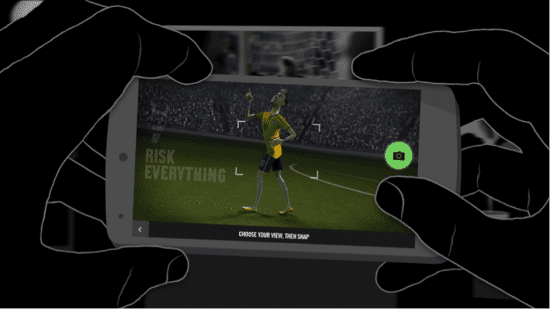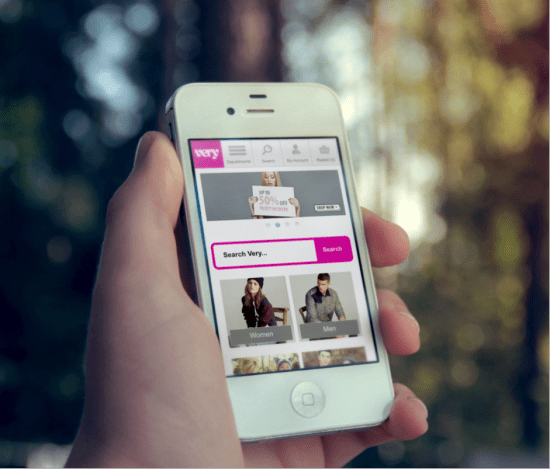Why Programmatic advertising is essential to reach the modern consumer


5 steps to harness technology and creativity using programmatic advertising to maximize its potential
To reach the modern consumer, companies must embrace ideas such as:
- Programmatic advertising
- Advertising for multiple screens
- Personalization
Consumers today have become increasingly adept at ignoring advertising they feel is no longer a utility, but an irritation. While the always-on phenomenon has become a popular buzz-phrase, in reality the cognitive load placed on consumers as a result of the on demand economy has been significant. Not only are consumers filtering out irrelevant advertising, but poor ad placements are also harming brands and their reputations. According to this Online Personal Experience study conducted by Janrain, nearly 3/4 of U.S. consumers report feeling annoyed when they see adverts and content that does not match their needs or interests. Econsultancy has also reported that over half of UK internet users have a desire for more relevant ads.
Download free resource – Programmatic Marketing Brief
Learn the key questions to ask when managing Programmatic.
Access the Programmatic Marketing Briefing
For marketers, successfully managing this shift in consumer attitudes towards advertising has increasingly become about working with real-time data. According to the Media Economy Report by Magna Global, ads that are delivered to customers in real time have twice the engagement rate of those which are not. The digitally empowered consumer now expects to interact anywhere and at any time, in new and disparate ways. To meet this demand, marketers are frequently turning to automated advertising to deliver contextually relevant ads, anywhere on the web, in less than the 200 milliseconds it takes to load a webpage.
Where art meets science
Some marketers have been slow to adopt automated advertising, as they believe it takes much of the creativity and moment-by-moment control out of human hands. And while true, programmatic advertising does give us a whole stream of information about the customer, such as who they are and what their context is, it does not necessarily tell us what to do, how to treat them or what content to deliver. That fact is, automated marketing has actually enhanced the ability for marketers to be more creative and relevant, at scale and speed.
Take Nike’s ‘Phenomenal Shot’ campaign during last summer’s world cup. The brand created incredibly immersive 3D mobile display ads, that incorporated important moments from tournament fixtures in real-time across 15 countries. Fans could interact with the advertisements within seconds of the action on the soccer field, creating an engaging campaign that offered an incredible experience for customers and the brand (the campaign saw success to the tune of 2.2 million engagements).

While programmatic real-time buying offered Nike enhanced customer targeting capabilities, the campaign would not have been a success without the design thinking needed to conceptualise the customer experience. The messaging, imagery and interactivities involved in delivering the campaign had to be methodically thought through. By understanding not only who the customer is, but what emotionally they were trying to achieve, Nike were able to deliver one of the most successful (and engaging) ad campaigns of last year’s world cup.
The success of Somo and Very.co.uk
At Somo, we recently gained recognition for our work with Very.co.uk, in which we used a combination of automation and creativity to deliver an ROI of 15:1 for the clients 2014 – a Very stylish Christmas – campaign. Together with the brand, we worked to create a campaign focused on providing real-time ads to Very.co.uk’s audience, as they were ‘second screening’ on mobile devices during the brand’s TV advert. If someone began searching for more information about Very while an advert was playing on television, for example, that would trigger particular personalized content. We also tracked consumers who were completing Christmas shopping during the day and targeted them with messages in the evening, encouraging them to continue shopping at home on their mobile devices.

This campaign achieved success for two reasons. Firstly, the tracking of post impression activity allowed us to determine which advert placements were having the greatest impact on consumer behaviour. This allowed us to further optimize the campaign. Secondly, the real-time capabilities of programmatic marketing helped us provide targeted advertisements to consumers at the high influence touch points on their path to purchase. It eliminated much of the guess work concerning our core audience and allowed us to focus on those most receptive to the brand message.
Finding your way with programmatic advertising
Using programmatic technology to enhance advertising campaigns can be a wonderful way to engage with customers and capture their attention when it matters most. Those who have not done so before, however, might struggle to know where to begin.
Step One: Identify your target audience and organise your data
Using real-time data along with market research identify your target audience. You want to have a complete view of your audience across multiple channels and devices.
Step Two: Begin the design
Design compelling creative content that can be used across multiple devices and channels. When targeting a mobile audience, success can be found in customizing creative units to take advantage of the unique opportunities native to mobile devices. Touch screens, location-based information and call functionality all provide excellent opportunities for mobile optimization. The campaign should also leverage first and third-party data (i.e. demographics, past purchase and interactions, location and interest signals) to create a more individualized experience for the consumer.
Step Three: Implement with integrated technology
Identify the touch points and the interactivities behind the campaign, to determine who should see particular adverts and when. Integrate the technology across various devices to account for user movements.
Step Four: Measure for success
The success of a campaign stretches beyond clicks or impressions; you also need to look at customer behaviour in-flight to gauge impact. Once the ads are shown, you need real-time data that will show you how the impression has impacted your viewers and the actions they took after seeing it. Additionally, it is also important to measure data related to the number of people who visit the brand site, click on the ad or otherwise interact with the company after seeing the advert for a complete picture of the campaigns success.
Step Five: Iterate – Adopt a model of continuous improvement
It is important to understand what worked well, what you produced with quality, what really resonated with your audience, and then build these learning’s into future campaigns and experiences that add value to the end user.
In the new competitive marketplace, consumers now expect contextually relevant advertising, which does not interrupt, but empowers them. By utilizing programmatic advertising, not only are brands able to meet this demand, they are unlocking the door for a new era of creativity in which smart technology is used not only to target an audience, but create emotive real-time experiences that drive them to action.
 Thanks to Prosper Williams and Chris Sheldon for sharing their advice and opinions in this post. Prosper Williams is a Mobile Strategist at Somo Global and Guest Lecturer at Cass Business School. He is responsible for creating media strategies that help brands to effectively connect with customers and optimize their mobile channels and tactics You can follow him on Twitter or connect on LinkedIn. Chris Sheldon is a Senior Account Manager looking after global mobile marketing campaigns across industries such as gambling, retail, publishing and telcos of Somo You can follow him on Twitter or connect on LinkedIn.
Thanks to Prosper Williams and Chris Sheldon for sharing their advice and opinions in this post. Prosper Williams is a Mobile Strategist at Somo Global and Guest Lecturer at Cass Business School. He is responsible for creating media strategies that help brands to effectively connect with customers and optimize their mobile channels and tactics You can follow him on Twitter or connect on LinkedIn. Chris Sheldon is a Senior Account Manager looking after global mobile marketing campaigns across industries such as gambling, retail, publishing and telcos of Somo You can follow him on Twitter or connect on LinkedIn.
From our sponsors: Why Programmatic advertising is essential to reach the modern consumer



